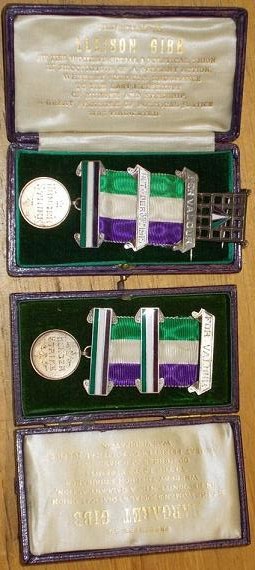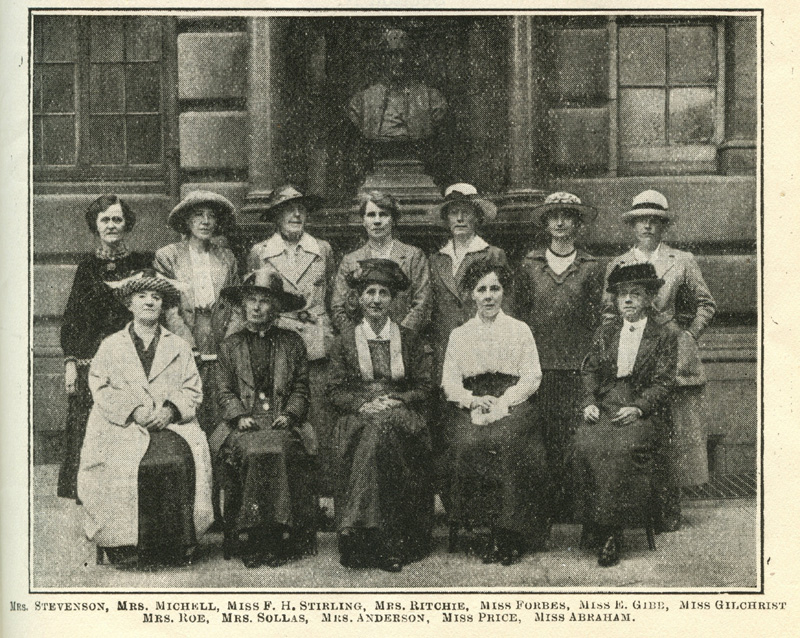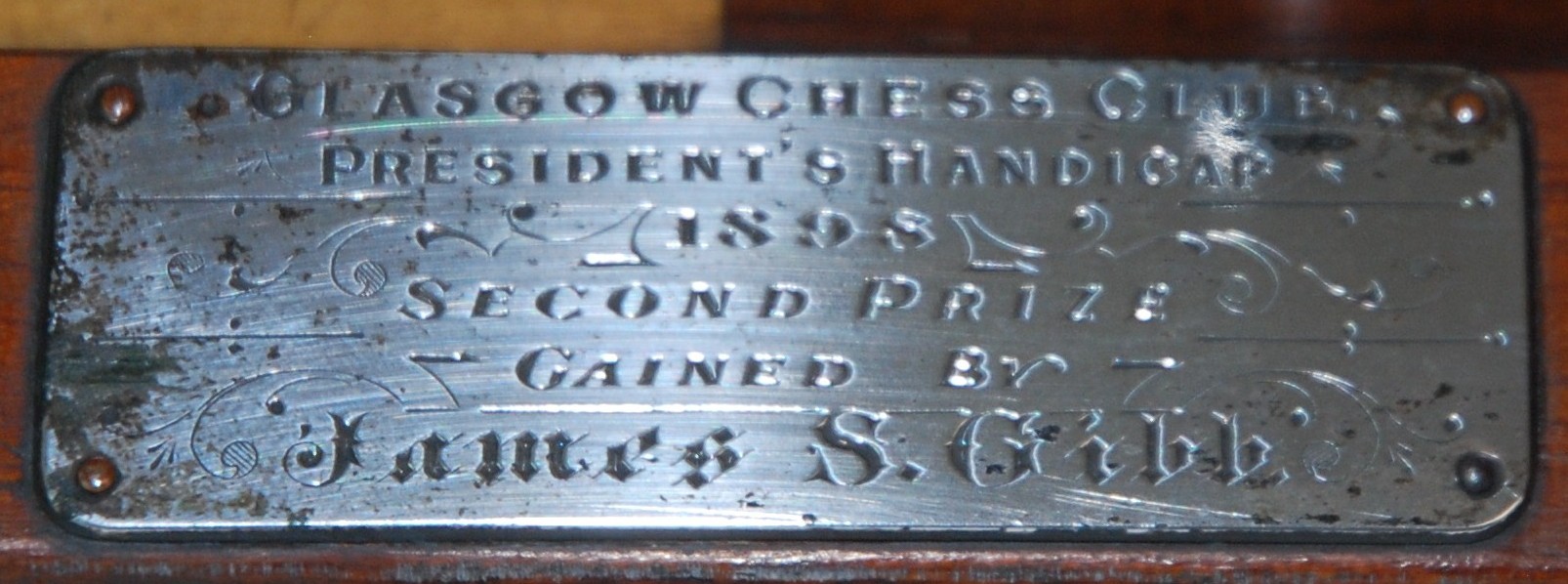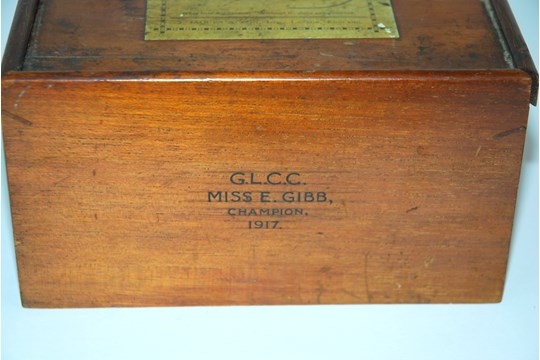 |
|
|
The Gibb Family
Chess Players and Suffragettes
Margaret Gibb
(née Skirving)
ca. 1850-52 - 10 April, 1918, Glasgow
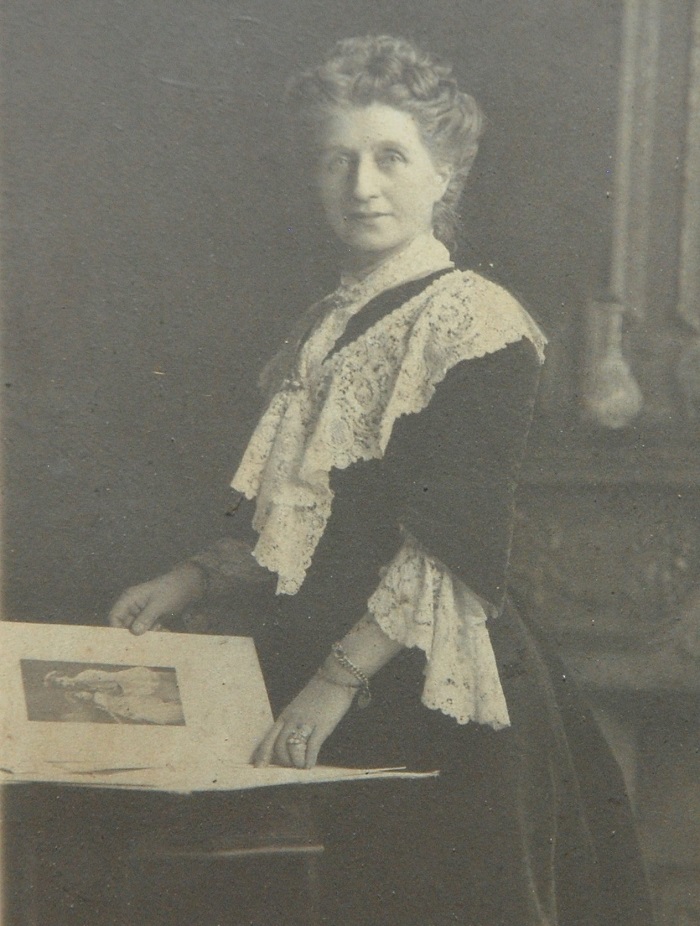
This is thought to be a portrait of Mrs Margaret Gibb.
It was included with numerous Gibb family personal papers offered at auction in September 2018.
Margaret Skirving Gibb
02 September 1877, Glasgow - 09 February 1954, Ayr (SCO)
Ellison Scotland Gibb
6 March 1879, Glasgow - 1970, Ayr (SCO)
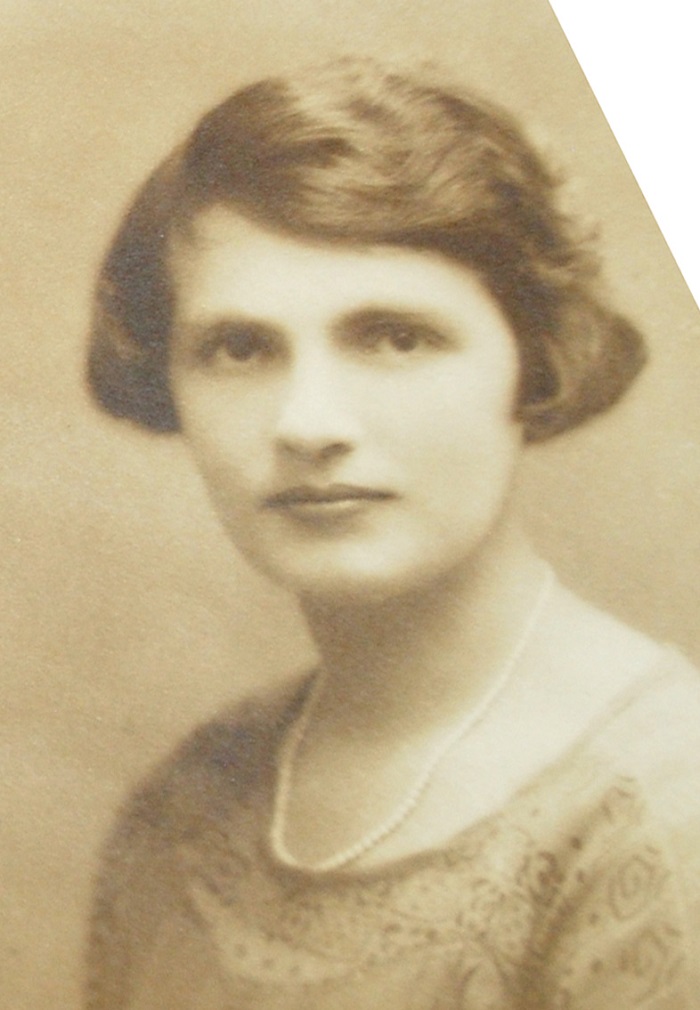
Believed to be a portrait of Ellison Scotland Gibb.
Offered at the auction mentioned above.
These three members of the Gibb family played a significant part in the development of women's chess in Scotland, as well as making their influence felt within the Suffragette movement.
The mother in the family, Margaret Gibb (m.s. Skirving) married Peter Walker Gibb, Fish Merchant, in 1870. Initially, the couple lived at 262 Bath Street, Glasgow, which is where their first three children were born; Peter in 1871, Alexander in 1874 (who died 1878) and James in 1875.
By the time the future chess-playing sisters were born - Margaret in 1877 and Ellison in 1879 - the family was living at 10 Granby Terrace, Hillhead, Glasgow. Later, the street name was changed to 20 Hillhead Street, as per the 1901 Census extract shown below. Mrs Margaret Gibb is shown as 'Head' as her husband had died in 1896.
Early Moves
The first ladies' club in Scotland was founded in Edinburgh in 1904 and a Scottish Ladies' Chess Association (SCLA) was organized in March 1905. Clearly influenced by such efforts, as well as the fact that Stirling Ladies' CC was established in November 1905, the elder Margaret Gibb, along with several other lady members of the Hillhead Chess Club in Glasgow, founded the Glasgow Ladies' Chess Club in late 1905. Mrs Gibb was the first president of the new club and daughter Ellison became the secretary, remaining in this post until 1912.The club immediately made its mark, as far as chess organization was concerned, by hosting the Scottish Ladies' Championship for 1906. In these early days the club met in the rooms of the Central Chess Club at 51 West Regent Street, Glasgow (Regent Tea Rooms), but by the end of 1906 it had changed its venue to the nearby Cameron's Tearooms, 122 St Vincent Street.
Over the years the club acquired many trophies, courtesy of its members. Mrs Margaret Gibb donated the Gibb Cup for the handicap competition and later, after her death in 1918, the Margaret Gibb Cup for the club championship was presented to the club by Ellison in memory of her mother.
The Gibbs were involved in events at local and national level. In 1907 Ellison Gibb won the Minor tournament at the Scottish Ladies' Chess Association congresss in Edinburgh, and in 1908 the Glasgow Ladies' CC began their association with the newly-formed Glasgow Chess League.
References to the Gibbs usually appeared as Mrs M. Gibb or Mrs Gibb, Miss Gibb, presumably for Margaret, the eldest of the girls, while Ellison was referred to by her full given name or Miss E. Gibb.
Presumably, if Muriel Gibb (born 1882) had also been participating in chess events, there would have had to be another method used to identify her. Muriel, however, seemed to take a different path from her sisters. In 1913 she married Victor Thom McWalter McClure (often seen as MacClure), but from whom she later obtained a divorce. McClure was born in Clydebank, Dumbartonshire, in 1887 and died in Lambeth in 1963. He was an author of some note. Muriel died in 1957 at 75 Monument Road, Ayr.
Muriel Gibb
Leagues of Distinguished Ladies
The ladies were also involved with other Leagues, including the Women's Social and Political Union, and the Actresses' Franchise League, which campaigned for women's suffrage. Those involved in the campaigns often gave false and misleading information when arrested, so it is possible that Ellison Gibb was arrested when a group of women demonstrated outside 10 Downing Street, the Prime Minister's official residence, on 21 May 1908. Among those arrested was an 'Edith Gibb'.The November 3, 1910 issue of The Common Cause ('The Organ of the Women's Movement for Reform') included the following reference:
‘Will Suffrage Societies please note that Miss Ellison Gibb, Elliott House, Hillhead, Glasgow, has kindly undertaken to act as hon. Secretary to the A.F.L in Glasgow? She will be glad to hear from those wishing to become members of the League, and give information to Suffrage Societies desiring the professional services of members on tour.'
Despite her many administrative responsibilities, Ellison Gibb enjoyed getting out of the office:
The Scotsman, Friday, 25 November 1910, page 9.
In reporting this London incident, a number of newspapers referred to 'Ellen Gibb'. It could be that in the immediate aftermath of the demonstration and arrests that there was some confusion surrounding the true identities of those arrested. Or, it could be that those arrested used false names, but there true identities were discovered later.
Some ot those newspapers of the day correctly referred to 'Ellen Gibb' as a descendant of William Skirving (1745-1796), who had campaigned for universal franchise. In 1792, wishing to stimulate political reform, Skirving became secretary of the Scottish Friends of the People. Not long after, he was found guilty of sedition and sentenced by Lord Braxfield to be transported to Botany Bay for fourteen years. He, and others who suffered for the same cause, later became known as the Scottish Martyrs. Skirving died only a few years after arriving in New South Wales.
Considering that both Margarets carried the Skirving name, and in view of Ellison's middle name, it is not surprising that the Gibbs were also interested in parliamentary reform.
And, a year later, the House of Commons came under attack:
The Courier, Wednesday, 22 November 1911, page 5.
The Scotsman, Tuesday, 28 November 1911, page 11.
Asserting Their Will
When the 1911 Census was conducted the family was living at what it referred to as Elliot House, 40 Elliot Street, having moved a short distance within the Hillhead district of Glasgow. (Elliot Street was later renamed Cresswell Street.)
The above extract from the 1911 Census records indicates that personal information was withheld (Suffraggets [sic] - information refused). Margaret's age is shown here as 62, but her 1918 death registration shows her age as 65. More disinformation?
Ellison had a smashing time in London, 1912.
Later in 1912, Ellison and a colleague cause a stramash in Dundee.
Fanny Parker (left) and Ellison Gibb.
Evening Telegraph and Post
Wednesday, 30 October 1912, page 1.
Thursday, 31 October 1912
page 6.Further reports followed regarrding the Dundee incident:
Saturday, 2 November 1912, page 5.
Monday, 4 November 1912, page 7.It didn't take long for Ellison to be in the thick of things again. When Prime Minister Asquith visited Ladybank in Fife later in November 1912, Ellison was there to greet him. However, when someone attempted to prevent her speaking, Ellison ended up in court again, this time as the complainant.
Wednesday, 20 November 1912, page4.
And just in case you wondered where Ellison's sister Margaret was in all this.....
It is possible that Margaret was involved in other acts of protest before her 1914 conviction (note her use of an alias).
She certainly made her mark - similar to the actions of other Suffragettes - when she attacked a cultural institution.
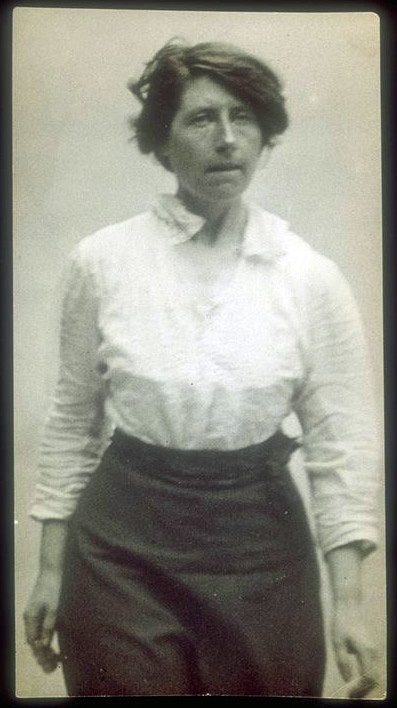 |
|
Suffragette medals awarded to sisters Ellison Scotland Gibb and Margaret Skirving Gibb
Inscription:
PRESENTED TO
ELLISON GIBB
BY THE WOMEN’S SOCIAL & POLITICAL UNION,
IN RECOGNITION OF A GALLANT ACTION
WHEREBY THROUGH ENDURANCE
TO THE LAST EXTREMITY
OF HUNGER AND HARDSHIP,
A GREAT PRINCIPLE OF POLITICAL JUSTICE
WAS VINDICATED.Identical wording is used for Margaret Gibb's award.
Ellison Gibb’s has the top silver bar engraved FOR VALOUR, central silver bar engraved
OCTOBER 30TH 1912, and the lower enamelled bar engraved on reverse FED BY FORCE 4/3/12, on a ring from which is hung the medallion engraved HUNGER STRIKE on front and ELLISON GIBB on reverse. The ribbon is in the vertical green, white and purple colours of the movement.Margaret Gibb’s is almost identical but with a central enamelled bar (rather than silver). The central bar is engraved on reverse FED BY FORCE 19.7.14, and the lower one FED BY FORCE 26/2/13, and the medallion engraved on the reverse MARGARET GIBB.
(Photo and information from Robert Murray (Edinburgh) auction 26 March 2018.)
1914-18 War and its Aftermath
Things were different after the outbreak of the war in the summer of 1914. The Suffragettes suspended their campaign, though the lobbying for political change continued. By the time the end of the war came in 1918 there had been a softening of attitudes, the result of which is explained in the following extract. It is interesting to note that the courageous actions of the women also led changes in the rules regarding voting rights for men.During 1916-1917, the House of Commons Speaker, James William Lowther, chaired a conference on electoral reform which recommended limited women's suffrage.
Influential consideration
Only 58% of the adult male population was eligible to vote before 1918. An influential consideration, in addition to the suffrage movement and the growth of the Labour Party, was the fact that only men who had been resident in the country for 12 months prior to a general election were entitled to vote.
This effectively disenfranchised a large number of troops who had been serving overseas in the war. With a general election imminent, politicians were persuaded to extend the vote to all men and some women at long last.
Representation of the People Act 1918
In 1918 the Representation of the People Act was passed which allowed women over the age of 30 who met a property qualification to vote. Although 8.5 million women met this criteria, it only represented 40 per cent of the total population of women in the UK.
The same act abolished property and other restrictions for men, and extended the vote to all men over the age of 21. Additionally, men in the armed forces could vote from the age of 19. The electorate increased from eight to 21 million, but there was still huge inequality between women and men.
Equal Franchise Act 1928
It was not until the Equal Franchise Act of 1928 that women over 21 were able to vote and women finally achieved the same voting rights as men. This act increased the number of women eligible to vote to 15 million.
Source: http://www.parliament.uk/about/living-heritage/transformingsociety/electionsvoting/womenvote/overview/thevote/Back to the Board
The British Women's Championship, Edinburgh 1920
Some Chess Results
1898
James Skirving Gibb was a member of Glasgow CC. In 1898 he won second prize - a chess board - in the President's Handicap Tournament.The board was offered at auction in September 2018, at Great Western Auctions, Glasgow.
1907
Ellison Gibb won the Ladies' Minor tournament at the Scottish Ladies' Championship. (The Chess Amateur, May 1907, p. 229)1917
Ellison Gibb was champion of Glasgow Ladies' CC. Her prize was a set of Staunton chess pieces. The item appeared in a September 2018 auction at Great Western Auctions, Glasgow.
1920
Ellison Gibb defeated Kostich in his 24-boards Glasgow simultaneous exhibition. This was his only loss.
1921
Ellison Gibb drew against Blackburne when he visited the Glasgow Ladies' club on October 26 for a 14-boards simultaneous display. She was appointed President of the Glasgow Ladies' CC (Falkirk Herald chess column November 9, 1921).1922
Ellison Gibb was champion of Glasgow Ladies' CC.1923
Ellison Gibb played on board 2 for Glasgow Ladies' in their Robertson Cup final 4-3 win against Edinburgh Ladies'. She won her game aginst Miss Forbes.
Both sisters played in the Glasgow Ladies' team that reached the final of the 1922-23 season's Spens Cup.
Margaret Gibb won the Glasgow Ladies' CC championship, after a tie with her sister Ellison and Mrs Brockett. (Falkirk Herald, May 9, 1923, p. 4.)
Ellison and Margaret played in Alekhine's simultaneous display at the Glasgow CC on October 2 (both lost).
Sources:
ScotlandsPeople: http://www.scotlandspeople.gov.uk
http://www.freebmd.org.uk
British Chess Magazine: 1906, pp. 68 and 453; 1920, p. 277; 1922, pp. 196, 234; 1923, p. 205;
The Chess Amateur, May 1907, p. 229.
Dictionary of Scottish History. Harper Collins, Glasgow, 2001, p. 309.
Great Western Auctions, Glasgow (September 2018 auction).
Robert Murray (Edinburgh), smaps and collectibles (March 2018 auction).
Compiled by Alan McGowan
Edits - 24/08/2019

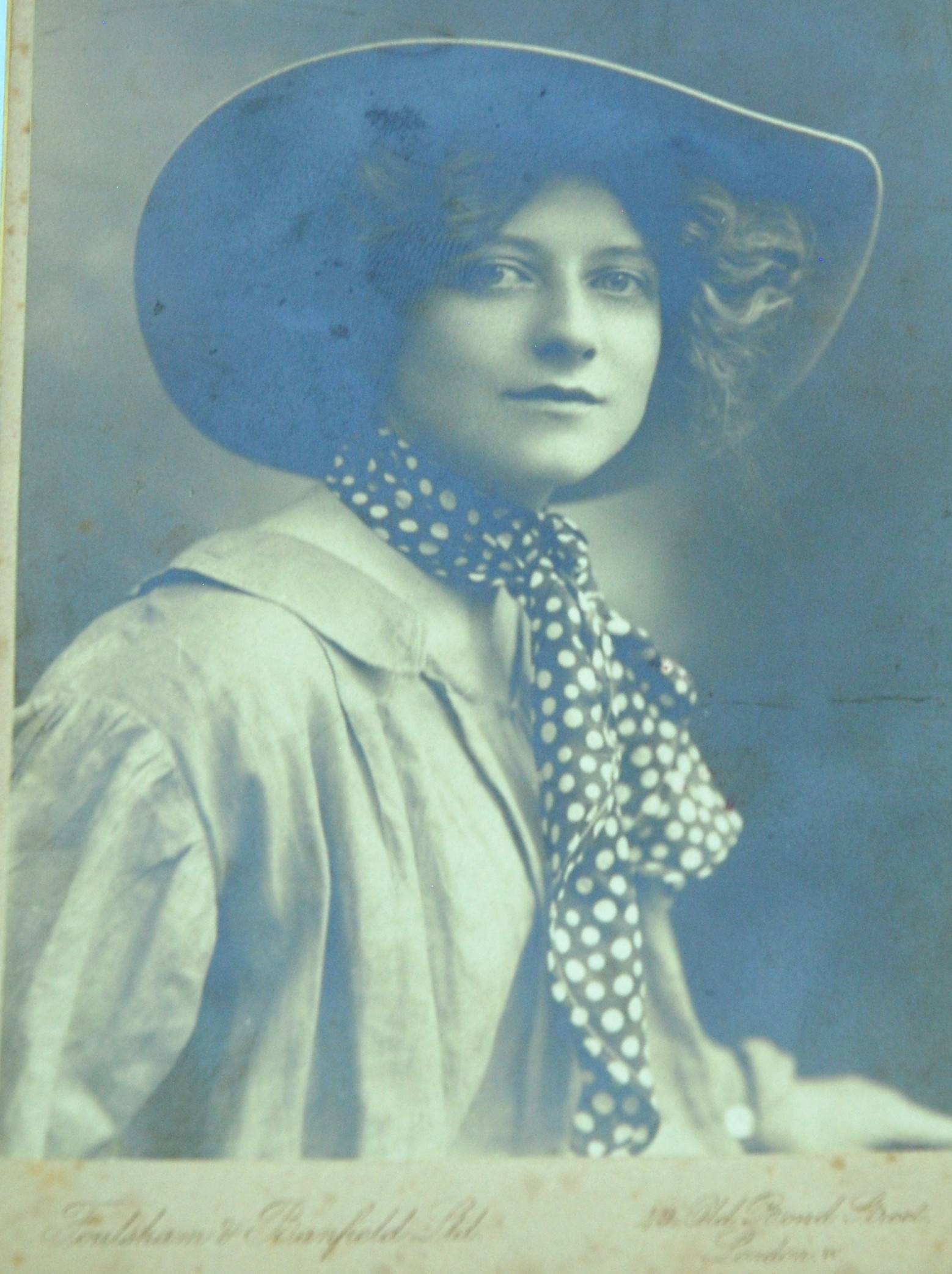
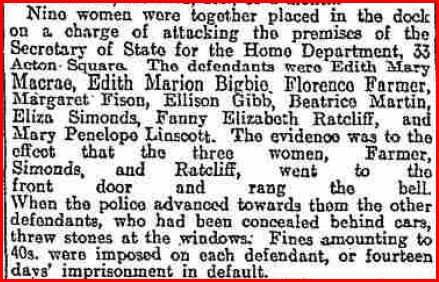
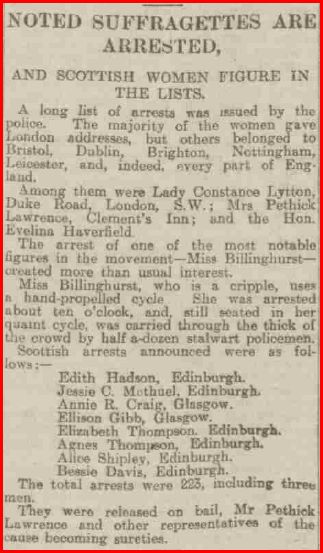
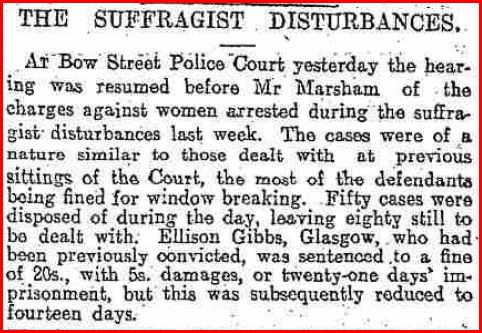


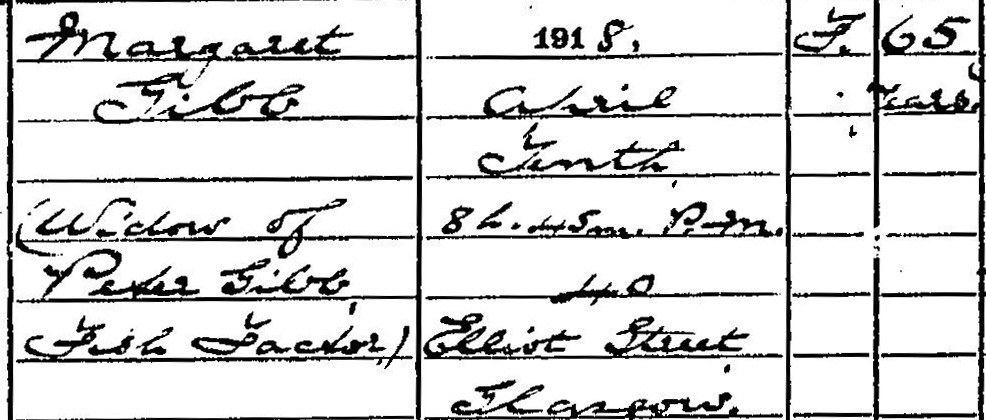
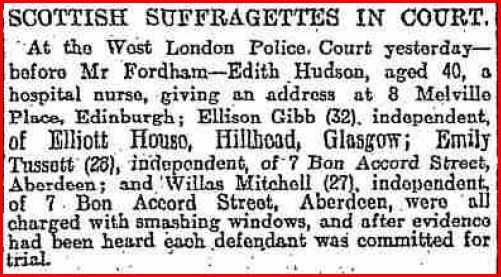
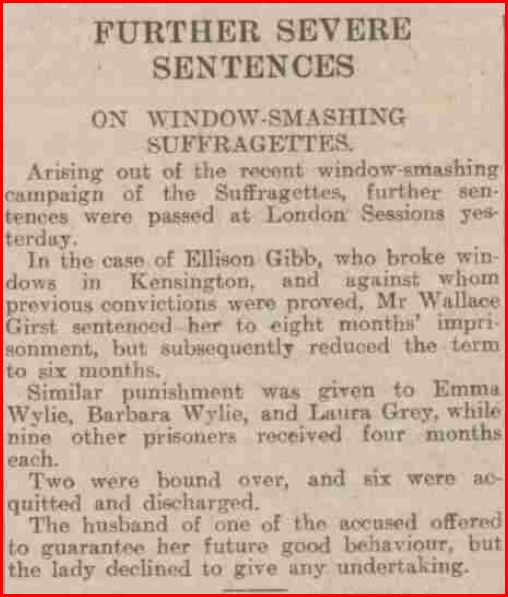
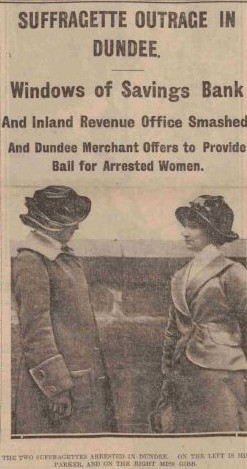

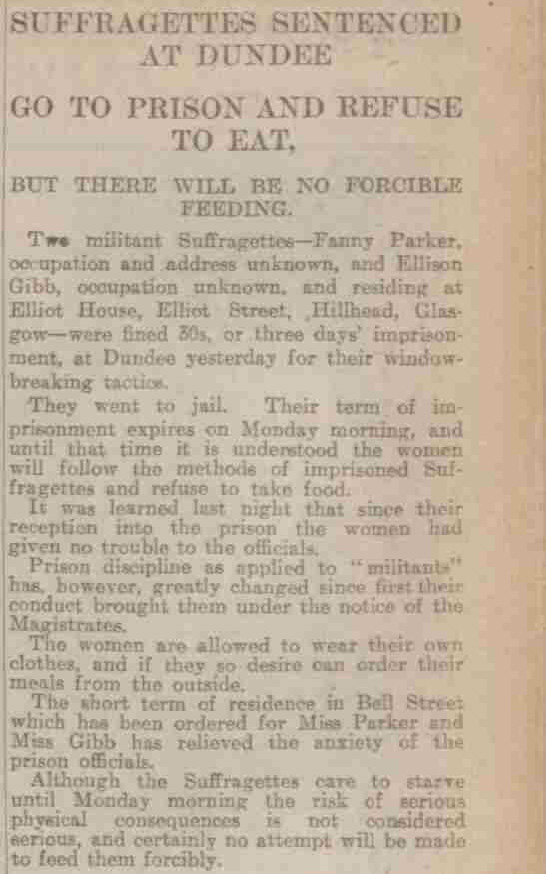
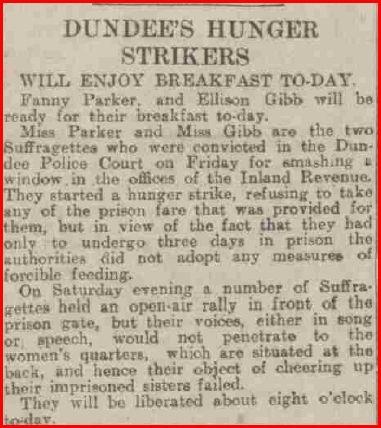
.JPG)
.JPG)
.JPG)
.JPG)
